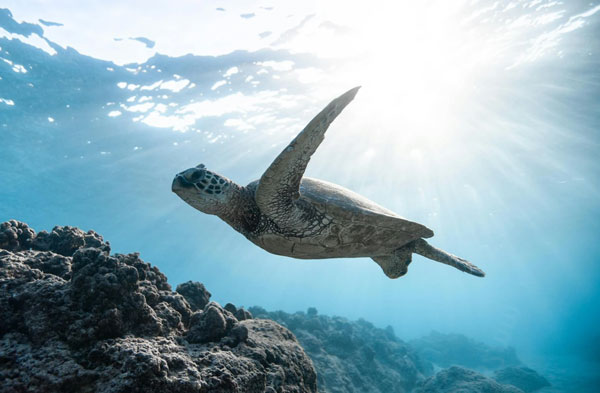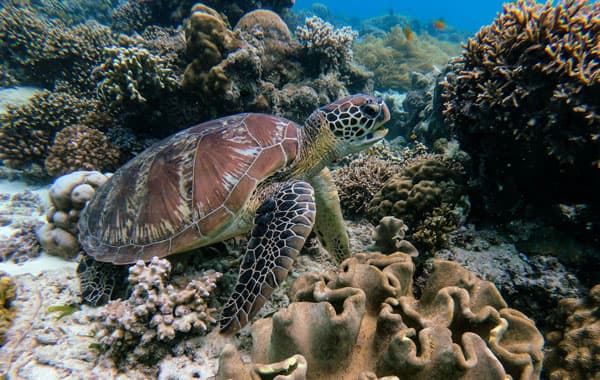What Do Sea Turtles Eat? Detailed Guide to Turtle Diet
Sea turtles are fascinating creatures that play an essential role in marine ecosystems. With their unique eating habits, they contribute significantly to the balance of marine life. This blog post will explore their dietary preferences, feeding frequency, and the impact their habits have on the sea ecosystem. We’ll also discuss what sea turtles should avoid eating to ensure their health and the health of their environment.

What Do Different Types of Sea Turtles Eat?
Different species of sea turtles have unique dietary needs and preferences. Understanding these can help us appreciate their role in the ecosystem and ensure their protection. Here are some details on what various types of sea turtles consume:
Green Sea Turtles: These turtles predominantly feed on seagrasses and algae. As herbivores, they play a vital role in maintaining healthy seagrass beds, which are essential for the ecosystem.
Loggerhead Sea Turtles: These are carnivorous turtles that primarily eat crustaceans like crabs, mollusks, and other invertebrates. Their strong jaws help them crush hard shells.
Leatherback Sea Turtles: Leatherbacks are known for their jellyfish diet. They can eat large quantities of jellyfish without being harmed by their stings, and this diet helps control jellyfish populations.
Hawksbill Sea Turtles: These turtles mostly eat sponges, and their specialized beak allows them to reach into crevices on coral reefs to extract their prey. They help control sponge populations, which benefits coral growth.
Olive Ridley Sea Turtles: These are omnivores, eating a variety of plant and animal matter, including algae, lobster, crabs, and various types of fish and plankton.
Kemp’s Ridley Sea Turtles: Similar to their Olive counterparts, these turtles are known for their preference for crabs, fish, jellyfish, and mollusks, balancing out the marine food web.
How Often Do Sea Turtles Eat?
Sea turtles’ feeding frequencies vary by species, age, and availability of food, but they generally follow specific patterns:

Frequency and Type: Adult sea turtles often eat every day or every other day. Juvenile sea turtles, growing quickly, tend to eat more frequently, sometimes multiple times a day.
Seasonality: During certain seasons, particularly nesting seasons, female sea turtles might eat less. They fast to prepare for the energy-taxing process of laying eggs.
Migration Phases: During migration, some species of sea turtles might not eat for weeks. They rely on their fat reserves to sustain them during long journeys between feeding and nesting grounds.
Diet Adjustments: Sea turtles may adjust their diet based on what is available in their environment. This adaptability helps them survive in diverse marine habitats.
How Does Sea Turtles’ Habit Affect Sea Ecosystem?
Sea turtles play a critical role in maintaining the health of marine ecosystems. Their eating habits have significant impacts:
Seagrass Bed Maintenance: Herbivorous turtles like Green Sea Turtles trim seagrass, which promotes healthy growth and prevents overgrowth that can smother other marine life.
Jellyfish Population Control: Leatherback Sea Turtles help control jellyfish populations, preventing jellyfish blooms that can be damaging to fish populations and human activities.
Coral Reef Health: By feeding on sponges, Hawksbill Sea Turtles allow coral reefs more space to grow. This balance supports a diverse marine habitat.
Nutrient Distribution: Sea turtles contribute to nutrient distribution through their excretions, which support the growth of marine plants and provide food for other sea dwellers.
What Should Sea Turtles Not Eat?
While sea turtles are adaptable, some foods are harmful to them:
Plastic and Debris: Mistaking plastic bags and other debris for jellyfish can be lethal. Ingesting plastic can lead to intestinal blockages and death.
Fishing Hooks and Nets: Sea turtles can accidentally eat fishing hooks or get trapped in nets. This can cause injuries or even be fatal.
Toxic Algae: Certain types of algae can produce toxins harmful to sea turtles. Herbivorous turtles must avoid areas with toxic algal blooms.
Human Food: Feeding sea turtles with human food can disrupt their natural diet and lead to malnutrition or obesity.
Conclusion
Sea turtles are remarkable creatures whose eating habits play a vital role in maintaining marine ecosystem health. Understanding what different types of sea turtles eat, their feeding frequency, and the impact of their dietary habits helps us appreciate their importance. It’s also crucial to recognize what foods are harmful to them. By protecting their natural diet, we contribute to the conservation of these fascinating marine animals.
FAQs
Do sea turtles eat jellyfish?
Yes, Leatherback Sea Turtles primarily eat jellyfish. Their unique adaptation allows them to consume jellyfish without being harmed by their stings.
What is a turtle’s favorite food?
Different species have different preferences. For example, Green Sea Turtles prefer seagrass, while Loggerhead Sea Turtles favor crustaceans.
Is it OK to feed sea turtles?
No, it is not advisable to feed sea turtles human food. This can disrupt their natural diet and cause health problems. By respecting their natural habitats and dietary needs, we can help ensure the survival of sea turtles for generations to come.
